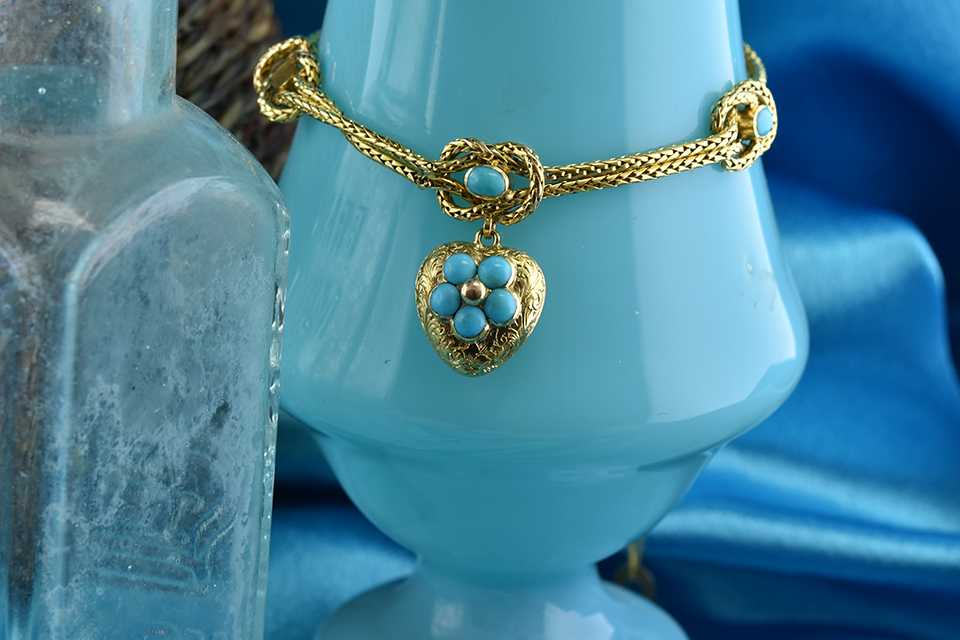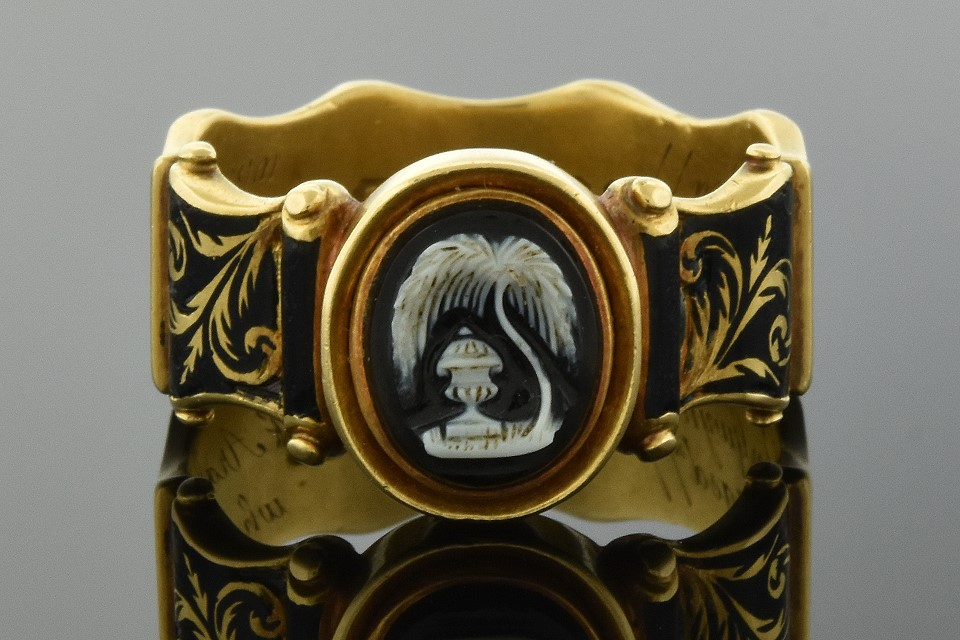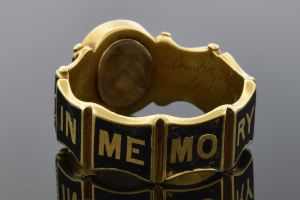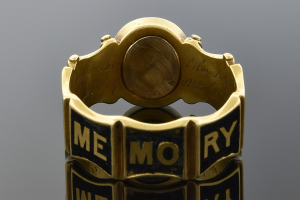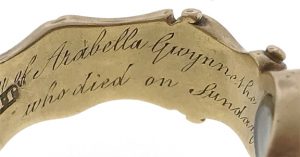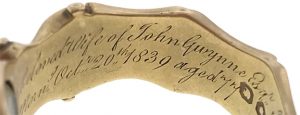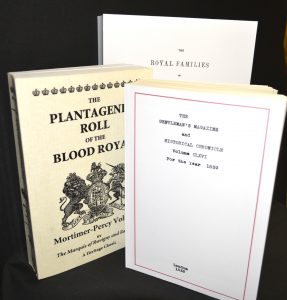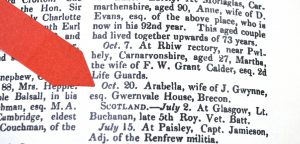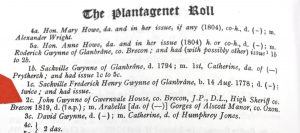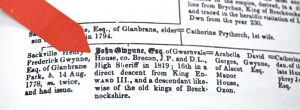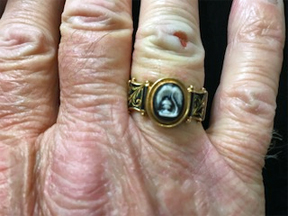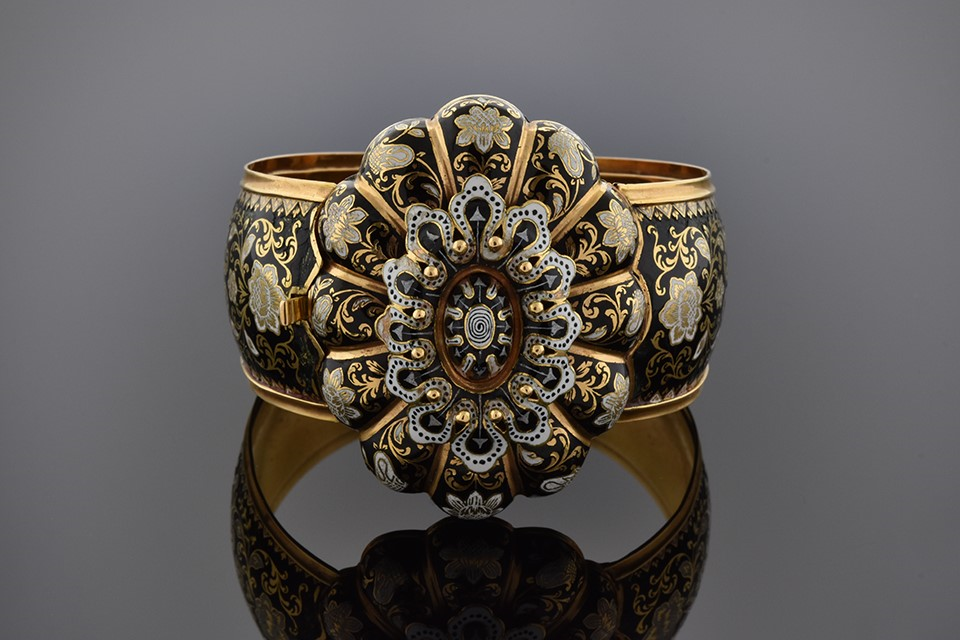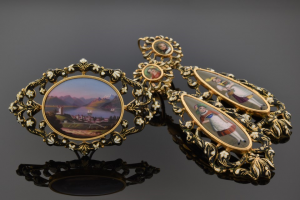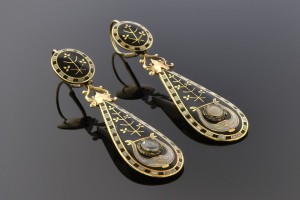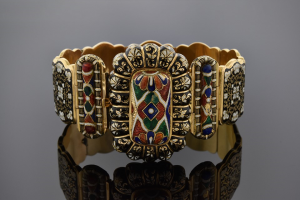Joden Girl
Baubles, Bling, and A Collector’s Things
There’s just something about Persian Turquoise… the color of summer skies and crystal clear Caribbean waters; a bright spot on a dreary day. This cheerful stone was the darling of jewelers in the 1800’s. Albert and Victoria gifted it to the train bearers and ladies in waiting in their wedding ceremony in the form of bird brooches and tiny portrait rings. The stone was considered by many to be a talisman. Turquoise was believed to protect the wearer against a myriad of things including poisoning and falling off your horse!
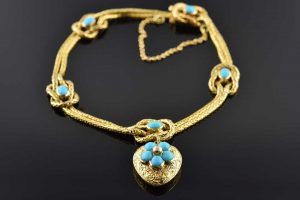
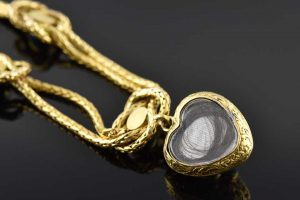
This charming bracelet was crafted at the end of the 19th century making it a crossover piece between the end of the Victorian era and the beginning of Art Nouveau. Handmade from a rich 18 karat yellow gold, this piece is super sweet. The main portion consists of two matching strands of woven chain. They create a series of five love knots, each one decorated with a bezel set oval turquoise. The love knot was a prevalent theme in vintage jewelry – symbolizing a love that lasts forever and cannot be untied. The center knot features an intricately etched heart charm with a turquoise flower. My favorite part of the bracelet is the hair receiver on the back of the heart… complete with a lock of dark hair still coiled inside… so romantic. The bracelet is in mint condition and priced at $2750.00. When you come to see it, be sure to mention that it’s in Joe’s Special Box.
“You can go to a museum and look, or come to us and touch.”
Written by Carrie Martin
Photos by Dana Jerpe

